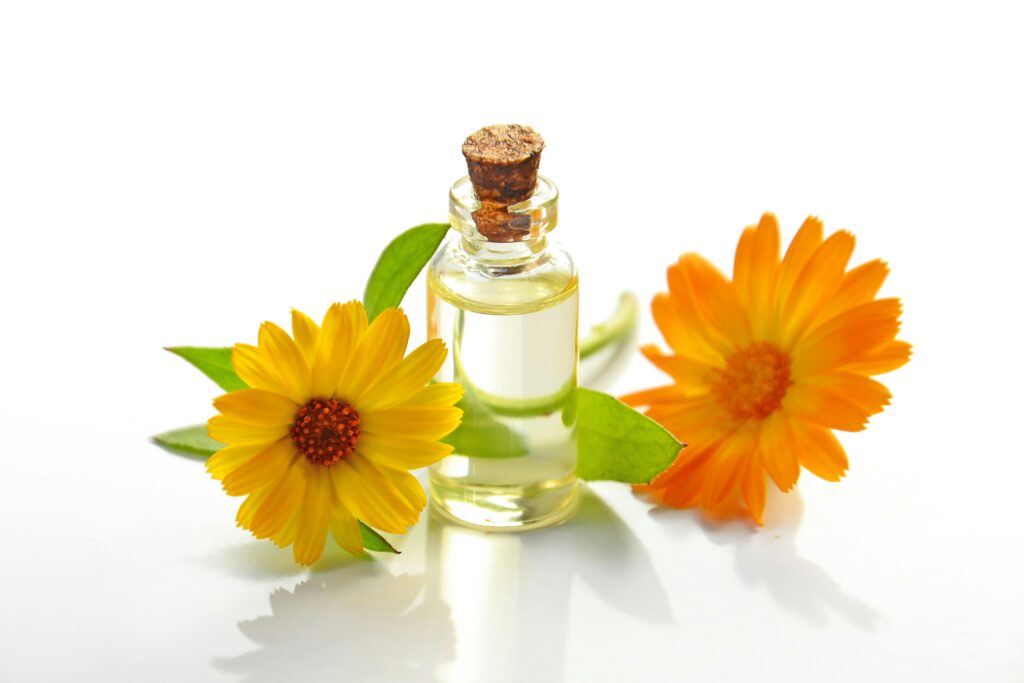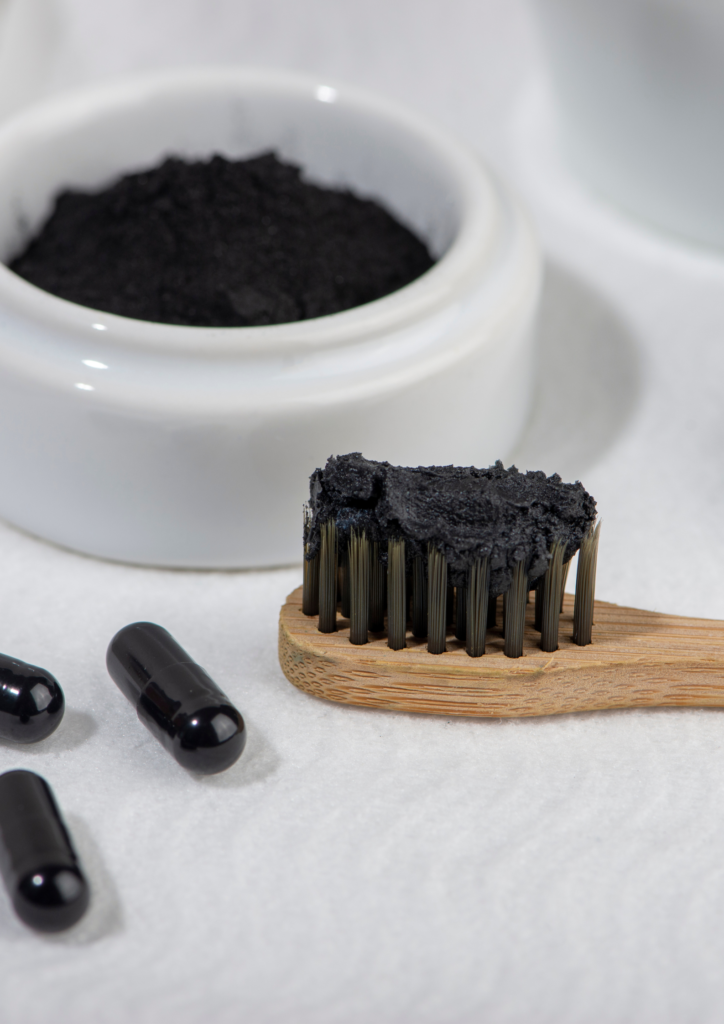Top 10 DIY Cleaning Recipes: A Guide to All-Natural, Eco-Friendly Solutions
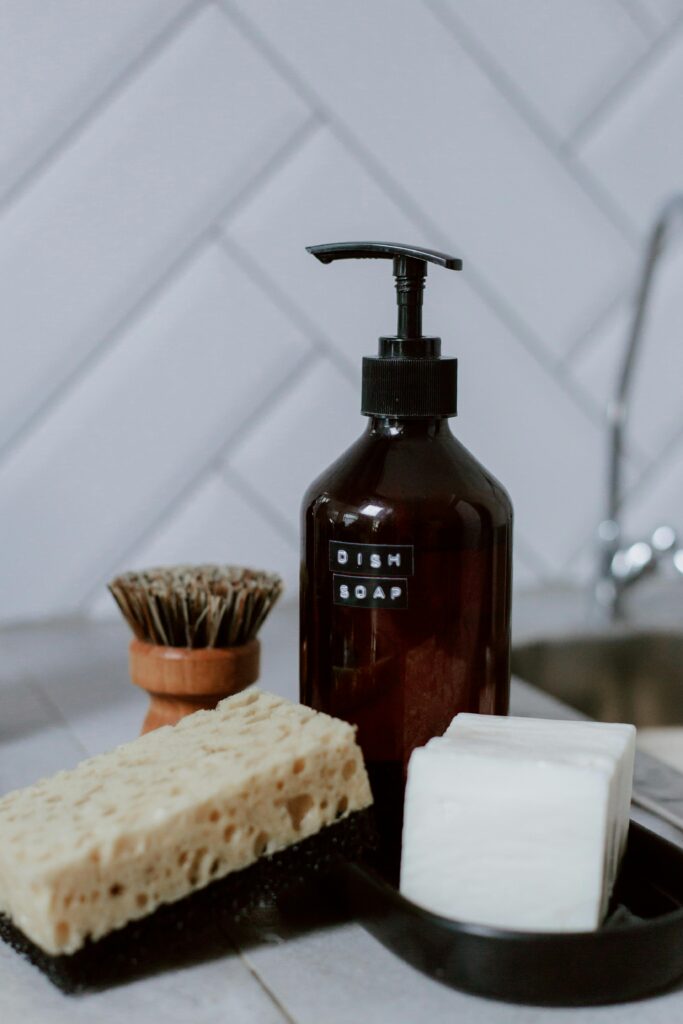
“Natural cleaning solutions not only protect your health but also reduce your carbon footprint,” says green living expert Jessica Foster.
In today’s world, we’re becoming more aware of the impact that chemicals have on our health, families, and the environment. From harsh cleaners to toxic air fresheners, many of the products we use to keep our homes sparkling clean contain harmful chemicals that can have long-term effects on our health. The good news is that you don’t need store-bought products full of chemicals to keep your home clean and fresh.
DIY natural cleaning products are easy to make, cost-effective, and, most importantly, safe for you and your family. In this blog, we’ll explore why it’s time to ditch the store-bought chemicals and embrace natural cleaning alternatives. We’ll provide you with practical recipes, explanations, and the benefits of making your own cleaning products. Plus, we’ll offer simple steps to help you create a cleaner, safer home—one that doesn’t come with a toxic price tag.
Cleaning your home doesn’t have to involve harsh chemicals or expensive commercial products. With simple ingredients you likely already have at home, you can create powerful, all-natural cleaning solutions that are effective, affordable, and safe for the environment. From sparkling windows to unclogging drains, this guide covers the top 10 DIY cleaning recipes you need for a greener, healthier home.
Why Avoid Store-Bought Chemical Cleaners?
Chemical cleaning products may seem effective and convenient, but they come with hidden risks. Here are a few key reasons to consider ditching them in favor of DIY alternatives:
1. Toxic Ingredients
Many store-bought cleaning products contain chemicals that can irritate the skin, eyes, and respiratory system. Ingredients like ammonia, chlorine bleach, and phthalates are commonly found in conventional cleaners and have been linked to asthma, allergic reactions, and even reproductive health issues.
2. Environmental Impact
Chemical cleaners contribute to air and water pollution. The ingredients in conventional cleaning products can leach into the environment, harming aquatic life and ecosystems. Many of these chemicals are not biodegradable, which means they persist in nature long after they’re used.
3. Costly and Inefficient
Not only are commercial cleaning products expensive, but many are diluted with water or other ineffective fillers, leaving you with a product that doesn’t go very far. On the other hand, DIY cleaning products are often made from simple, concentrated ingredients that you can use in higher quantities for a fraction of the price.
4. Health Concerns
Chronic exposure to certain chemicals found in cleaning products has been linked to long-term health problems, including hormone disruption, cancer, and neurological damage. The Environmental Working Group (EWG) recommends switching to non-toxic alternatives whenever possible, especially in homes with young children or pets.
Switching to natural cleaning methods helps protect your family’s health by reducing exposure to potentially harmful chemicals.
The Benefits of DIY Natural Cleaning Products
Switching to DIY natural cleaning products has numerous benefits for both your health and your home:
- Non-Toxic and Safe: You know exactly what’s in your cleaning products, eliminating the mystery and risk of exposure to harmful chemicals.
- Eco-Friendly: Many natural cleaning products are biodegradable and safe for the environment, which is especially important for those with septic systems or eco-conscious homes.
- Cost-Effective: Common household ingredients like vinegar, baking soda, and essential oils are affordable and can be used in multiple cleaning recipes.
- Customizable Scents: Essential oils allow you to customize the scent of your cleaning products, choosing your favorite natural fragrances instead of synthetic scents.
- Effective: Many natural ingredients are just as effective, if not more so, than their chemical counterparts, especially when combined properly.
Let’s dive into some simple DIY natural cleaning recipes that can replace your store-bought products.
DIY Natural Cleaning Recipes
Below are some of the easiest and most effective natural cleaning solutions. All of these recipes use common ingredients that you likely already have at home. We’ll explain each one’s purpose and provide easy-to-follow instructions.
1. DIY All-Purpose Cleaner
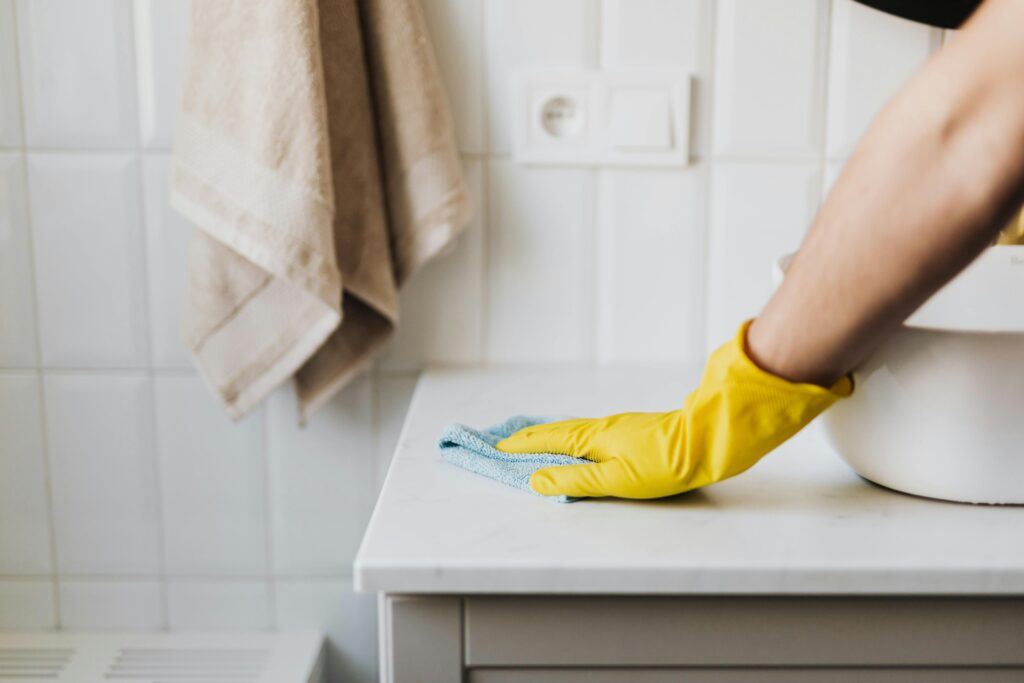
This versatile cleaner is perfect for kitchen counters, bathroom sinks, and more.
Ingredients:
| Ingredients | Quantity |
| Distilled water | 2 cups |
| White vinegar | 1/2 cup |
| Lemon juice | 2 tablespoons |
| Essential oil (tea tree or lavender) | 10 drops |
Instructions:
- Mix all ingredients in a spray bottle.
- Shake well before use.
- Spray onto surfaces and wipe clean.
Why It Works:
- Lemon juice’s acidity helps cut through grime.
- Tea tree oil adds natural antibacterial properties.
Get your Essential Oils Set – 16 Pcs Premium Grade Home Essentials Oils – for Diffusers, Fragrance, Scents for Candle Making, Soap, Slime – Natural Aromatherapy Oils for Skin & Hair – Home, Office, Car here.
2. Streak-Free Window Cleaner
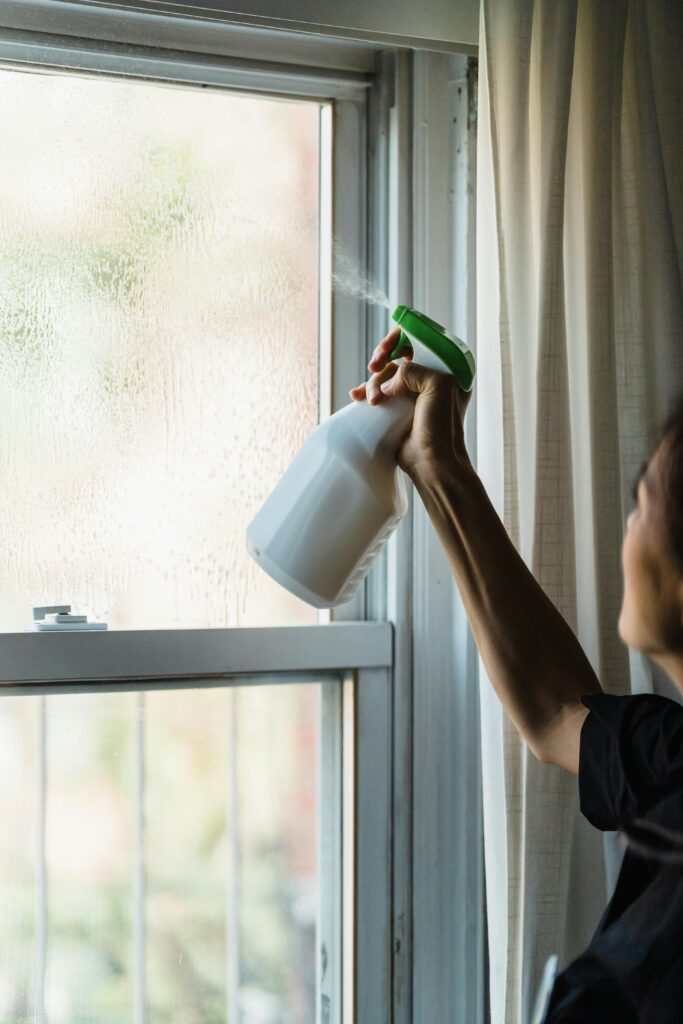
Say goodbye to streaky glass with this eco-friendly window cleaner recipe. Perfect for mirrors, windows, and glass surfaces.
Ingredients:
| Ingredient | Quantity |
|---|---|
| Distilled water | 2 cups |
| White vinegar | 1/2 cup |
| Liquid castile soap | 1 teaspoon |
| Essential oil (optional) | 10 drops |
Instructions:
- Combine all ingredients in a spray bottle.
- Shake well to mix.
- Spray onto glass surfaces and wipe clean with a microfiber cloth.
Why It Works:
- Vinegar cuts through grease and grime.
- Castile soap lifts dirt, while essential oils add a pleasant scent.
3. Toilet Bowl Cleaner
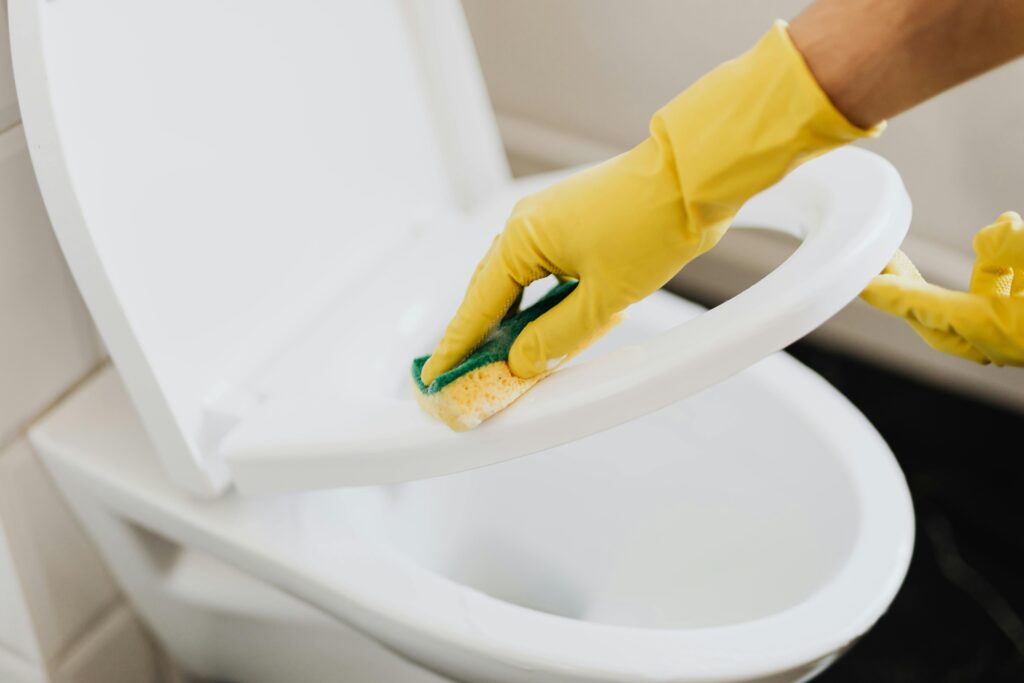
Keep your toilet fresh and clean with this fizzing DIY cleaner.
Ingredients:
| Ingredient | Quantity |
| Baking soda | 1 cup |
| Citric acid | 1/4 cup |
| White vinegar | 1/4 cup |
| Essential oil (optional) | 10 drops |
Instructions:
- Sprinkle baking soda and citric acid into the toilet bowl.
- Pour vinegar over the mixture.
- Let it fizz for 5 minutes, then scrub with a toilet brush and flush.
Why It Works:
- Baking soda and vinegar create a fizzing reaction that loosens stains and buildup.
4. Wood Furniture Polish
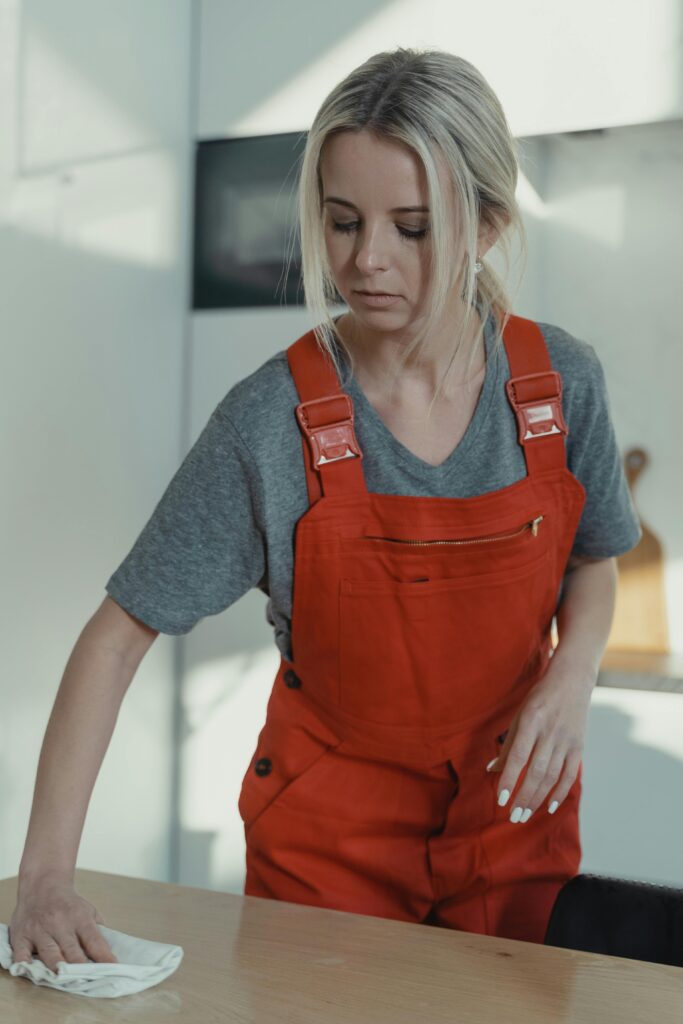
| Ingredient | Purpose | Instructions |
|---|---|---|
| 1/4 cup olive oil | Moisturizes and conditions wood surfaces | Mix olive oil with lemon juice and pour into a spray bottle. Shake well before use. |
| 1/4 cup lemon juice | Cleans and gives a natural shine | |
| 1/2 cup water | Dilutes the solution for safe use |
How to Use: Lightly spray on a microfiber cloth and rub onto wood surfaces to clean and polish.
Why It Works: Olive oil nourishes and conditions wood, while lemon juice provides both a clean surface and a fresh, pleasant scent. This solution works wonders on wooden furniture, cabinets, and floors.
5. DIY Drain Cleaner- Unclog Your Drains Naturally
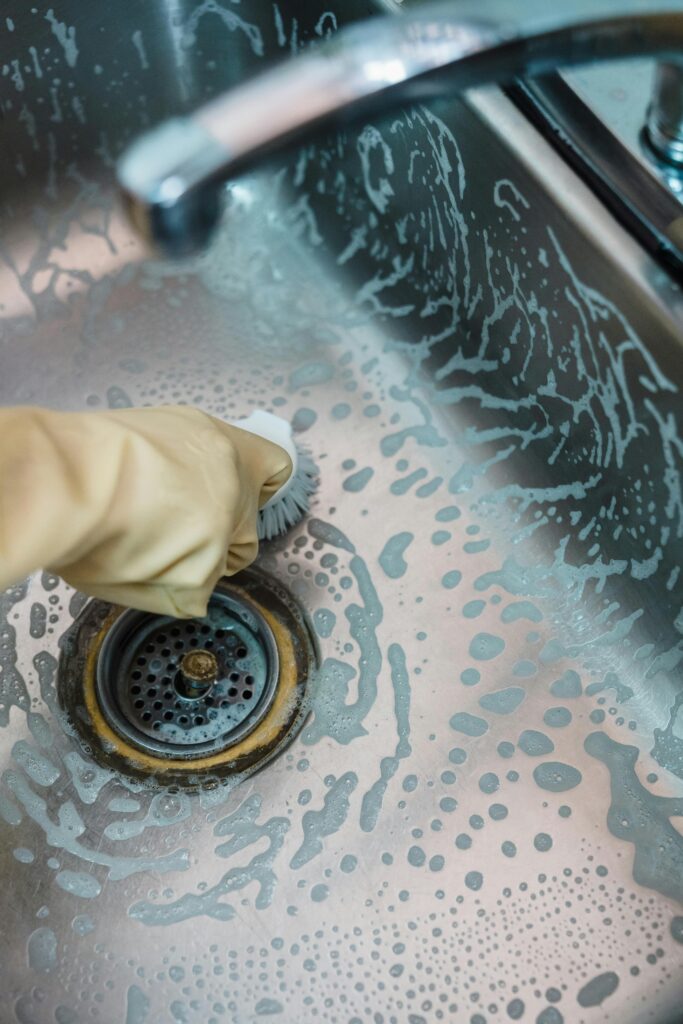
Clear blocked drains without harsh chemicals.
Ingredients:
| Ingredient | Quantity |
| Baking soda | 1 cup |
| White vinegar | 1 cup |
| Boiling water | 2 cups |
Instructions:
- Pour baking soda into the drain.
- Follow with vinegar and let it fizz for 10 minutes.
- Flush with boiling water.
Why It Works:
- The chemical reaction between baking soda and vinegar breaks down clogs and debris.
6. DIY Shower Cleaner
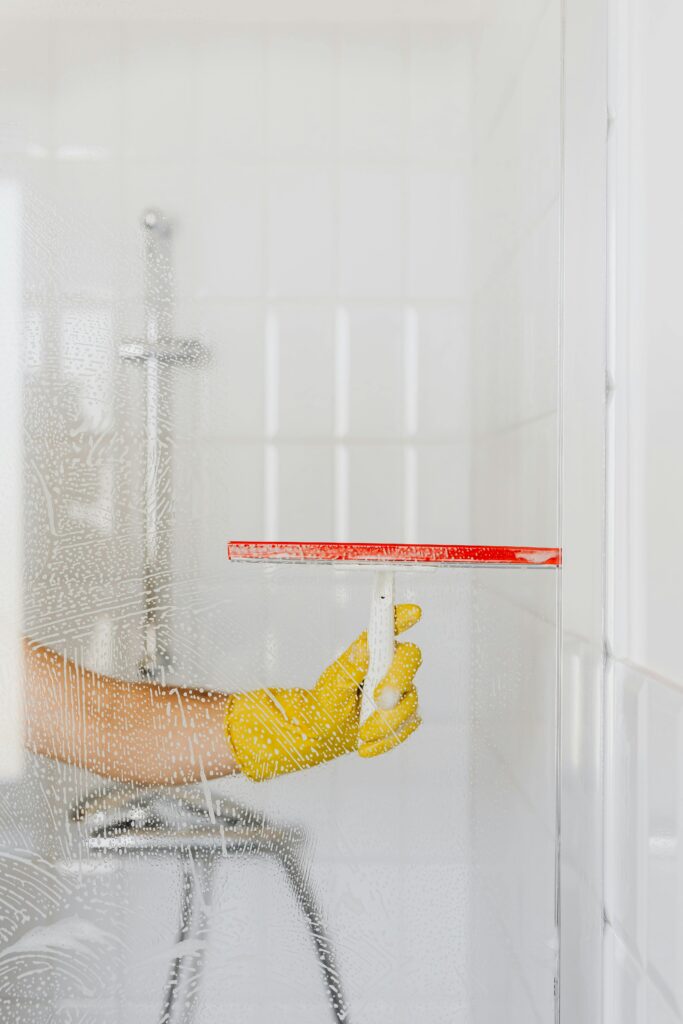
Keep your shower sparkling and mold-free with this recipe.
Ingredients:
| Ingredient | Quantity |
| White vinegar | 1 cup |
| Dish soap/castile soap | 1 cup |
| Essential oil (optional) | 10 drops |
Instructions:
- Heat vinegar slightly and mix with dish soap in a spray bottle.
- Spray onto shower walls and tiles.
- Let it sit for 15 minutes, then scrub and rinse.
Why It Works:
Vinegar eliminates mineral deposits and mold.
Dish soap cuts through soap scum.
7. Homemade Carpet Cleaner
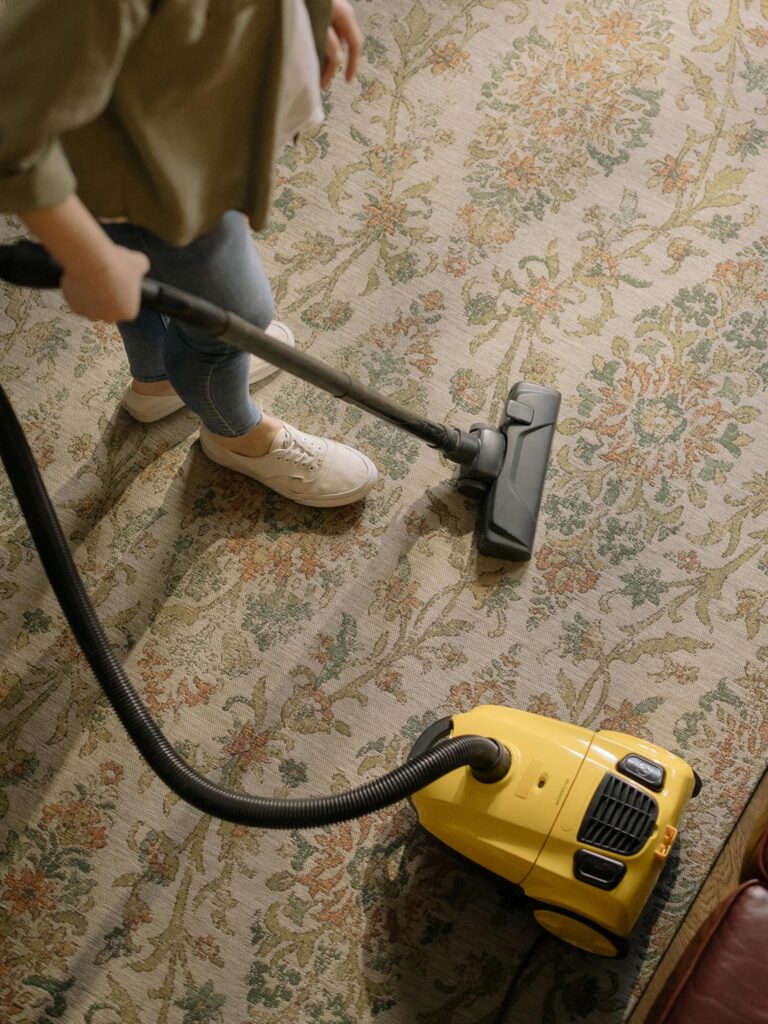
Remove stains and odors from carpets naturally.
Ingredients:
| Ingredient | Quantity |
| Baking soda | 1 cup |
| White vinegar | 1/2 cup |
| Water | 1 cup |
| Essential oil | 10 drops |
Instructions:
- Sprinkle baking soda over the stained area and let it sit for 30 minutes.
- Mix vinegar, water, and essential oil in a spray bottle.
- Spray the mixture onto the baking soda, scrub, and let dry. Vacuum afterward.
8. DIY Stove Cleaner

Remove grease and grime from stovetops easily.
Ingredients:
| Ingredient | Quantity |
| Baking soda | 1/4 cup |
| Water | Enough to form a paste |
| White vinegar | 1/4 cup |
Instructions:
- Make a paste with baking soda and water.
- Apply to the stovetop and let sit for 15 minutes.
- Scrub with a sponge, then wipe with vinegar for a shine.
9. Natural Floor Cleaner
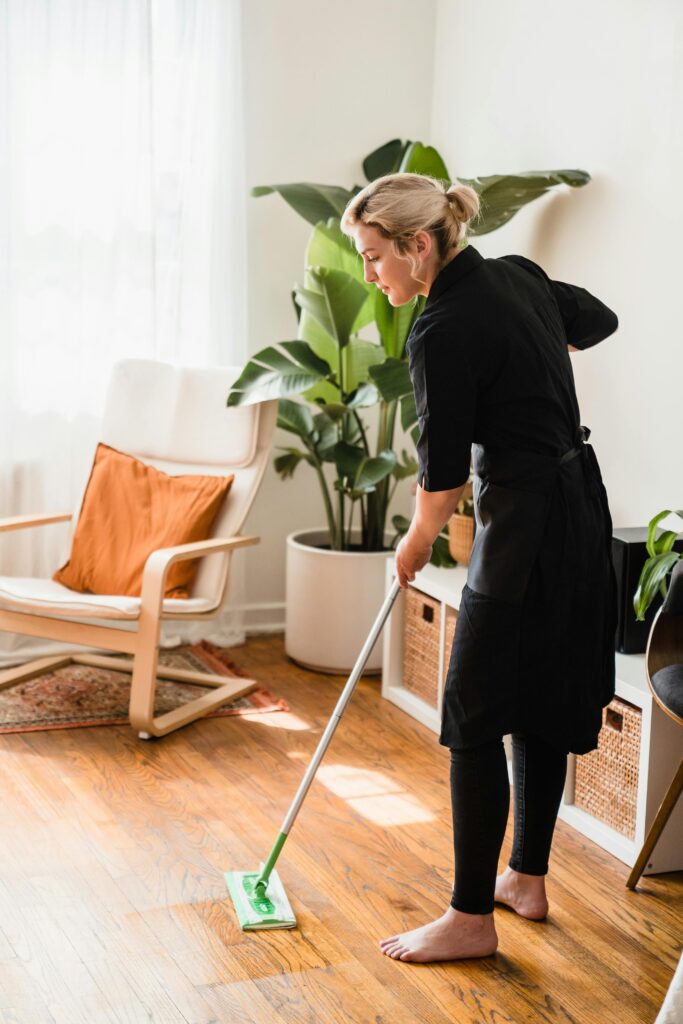
Gentle yet effective for wood, tile, or laminate floors.
Ingredients:
| Ingredient | Quantity |
| Warm water | 1 gallon |
| White vinegar | 1/2 cup |
| Essential oil (lemon or eucalyptus) | 10 drops |
Instructions:
- Mix all ingredients in a bucket.
- Mop your floors as usual.
10. DIY Stainless Steel Cleaner
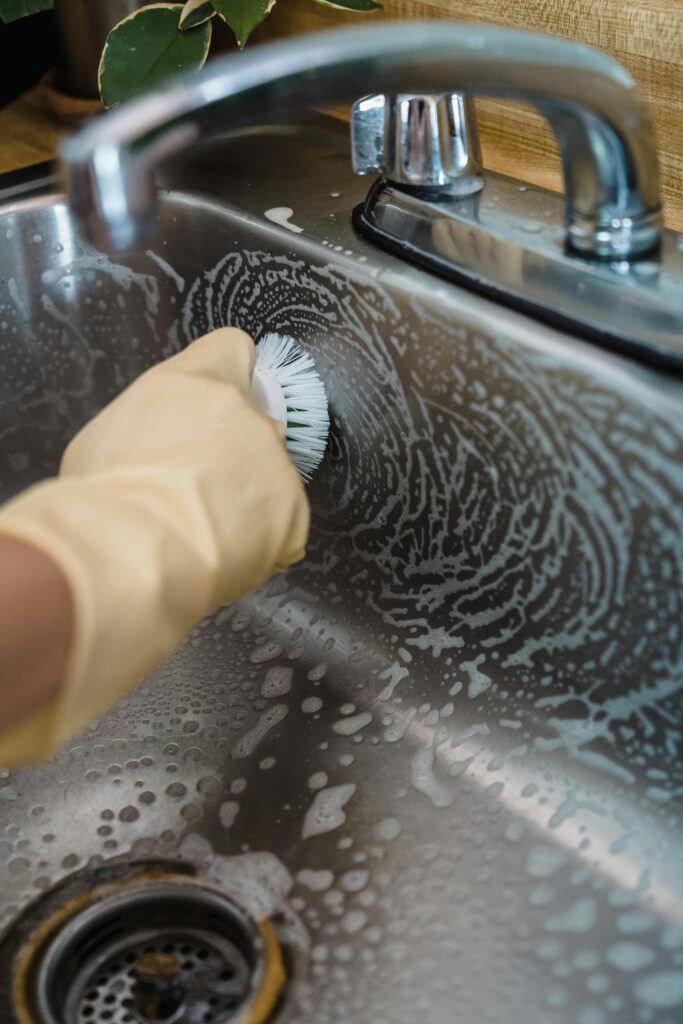
Bring the shine back to your stainless steel appliances.
Ingredients:
| Ingredient | Quantity |
| Olive oil | 1 tablespoon |
| White vinegar | 1 tablespoon |
Instructions:
- Dampen a cloth with vinegar and wipe the surface.
- Buff with olive oil for a polished finish.
BONUS recipe: DIY Air Freshener Spray
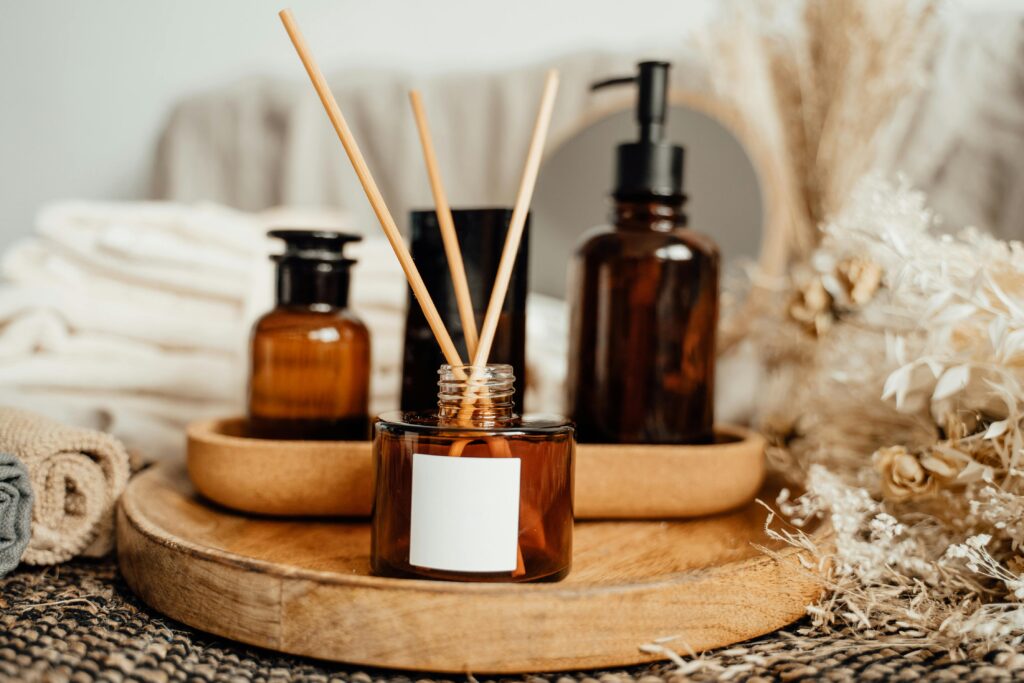
Refresh your home with this all-natural air freshener.
Ingredients:
| Ingredient | Quantity |
| Distilled water | 2 cups |
| Vodka or witch hazel | 2 tablespoons |
| Essential oil | 20 drops |
Instructions:
- Mix all ingredients in a spray bottle.
- Shake well and spray as needed.
Why Go Natural? The Environmental and Health Impact
“The Earth is what we all have in common.” – Wendell Berry
By making eco-friendly choices, we contribute to a healthier planet for future generations.
Not only do natural cleaning products keep your family safe, but they also contribute to a cleaner environment. Here are some reasons why switching to DIY cleaning solutions makes a difference:
1. Reduced Chemical Exposure
Commercial cleaners often contain a wide range of harmful chemicals, from ammonia to artificial fragrances. Many of these chemicals are linked to respiratory problems, skin irritation, and even long-term illnesses like cancer. By using natural alternatives, you can reduce the risk of exposure for both yourself and your loved ones.
2. Less Waste
Store-bought cleaning products often come in single-use plastic bottles. By making your own cleaners, you can reuse glass bottles, spray containers, and jars, drastically reducing your household waste.
3. Safer for Pets
Many commercial cleaning products contain toxic chemicals that can harm pets when ingested or inhaled. DIY cleaners, made with non-toxic ingredients like vinegar, baking soda, and essential oils, are much safer for your furry friends.
Conclusion: A Clean Home, Naturally
Switching to DIY natural cleaning products doesn’t just make sense for your health; it’s also an act of environmental responsibility. By using safe, non-toxic ingredients like vinegar, baking soda, and essential oils, you can create powerful cleaners that are just as effective (if not more so) than the chemical-laden alternatives. Plus, you’re saving money and reducing waste.
So next time you reach for that store-bought cleaner, consider the natural alternative. Your home, your family, and the planet will thank you.
References
- Environmental Working Group (EWG). (2021). Guide to Healthy Cleaning. Retrieved from https://www.ewg.org/guides/cleaners
The EWG provides in-depth research on the health hazards associated with household cleaning products, and offers a guide for safer, non-toxic alternatives. - American Lung Association. (2020). Cleaning Products and Your Health. Retrieved from https://www.lung.org/cleaning-products-and-your-health
This resource discusses how common cleaning products can impact respiratory health and offers tips on safer alternatives for cleaner air. - National Institutes of Health (NIH). (2019). Hazards of Household Cleaning Products. Retrieved from https://www.ncbi.nlm.nih.gov
NIH provides valuable information on the health risks of chemicals found in many popular household cleaners, from skin irritation to long-term exposure effects. - National Pesticide Information Center (NPIC). (2018). Health and Environmental Effects of Pesticides and Cleaning Products. Retrieved from http://npic.orst.edu
NPIC offers guidance on the risks associated with chemical pesticides and cleaning products, focusing on the effects on both human health and the environment. - Toxics Use Reduction Institute (TURI). (2021). Reducing Toxins in Household Products. Retrieved from https://www.turi.org
TURI provides research on toxic chemicals in consumer products and promotes safer alternatives through education and policy initiatives.
As an Amazon Associate, we earn from qualifying purchases, but at no extra cost to you!


